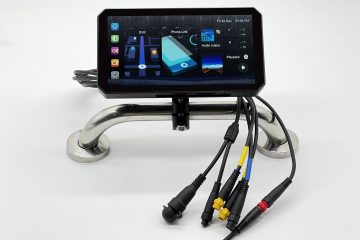Video surveillance has become an essential tool for retail stores, helping to deter theft, monitor employee performance, and enhance customer safety. However, the implementation of surveillance systems comes with a complex array of legal considerations that retailers must navigate to ensure compliance with privacy laws and protect themselves from potential lawsuits.
This article provides a comprehensive overview of the key legal aspects of video surveillance in retail environments.
Understanding the Legal Framework
Federal Laws
In the United States, there are no specific federal laws that govern the use of video surveillance in retail stores. However, several federal laws impact how surveillance can be conducted:
- The Fourth Amendment: Protects individuals from unreasonable searches and seizures by the government. Although it primarily applies to government actions, it influences privacy expectations in public spaces.
- The Electronic Communications Privacy Act (ECPA): Addresses the interception of electronic communications, which can include retail store video surveillance with audio recording capabilities.
State Laws
State laws vary significantly regarding video surveillance. Some states have specific statutes governing the use of video cameras in public and private spaces, while others rely on more general privacy laws. Key considerations include:
- Consent Requirements: Some states require consent from individuals being recorded, particularly if audio is also captured.
- Notification Requirements: Many states mandate that businesses notify customers and employees that surveillance is in use.
- Prohibited Areas: States often prohibit surveillance in areas where individuals have a reasonable expectation of privacy, such as restrooms and changing rooms.
Local Ordinances
Local governments may have additional regulations that impact the use of surveillance cameras. Retailers should check with their city or county authorities to ensure compliance with local ordinances.
Implementing Video Surveillance: Best Practices
Transparency and Notification
To avoid legal pitfalls, transparency is crucial. Retailers should clearly inform customers and employees about the presence of surveillance cameras. Effective ways to do this include:
- Signage: Place visible signs at store entrances and throughout the premises indicating that video surveillance is in operation.
- Employee Training: Ensure that employees understand the surveillance policies and can inform customers if asked.
Privacy Considerations
Balancing security needs with privacy rights is essential. Retailers should:
- Limit Surveillance to Public Areas: Avoid installing cameras in areas where privacy is expected, such as bathrooms, fitting rooms, and employee break rooms.
- Minimize Intrusion: Position cameras to focus on specific areas of interest, such as cash registers and high-value merchandise, rather than broadly capturing all activities.
Data Management and Security
Proper data management practices are critical to protecting the privacy of recorded individuals and complying with legal standards:
- Data Retention Policies: Establish clear guidelines for how long surveillance footage will be stored. This period should be long enough to address security needs but not excessively long to avoid potential misuse.
- Secure Storage: Use secure methods to store surveillance data, including encryption and access controls, to prevent unauthorized access.
- Access Control: Limit access to surveillance footage to authorized personnel only. Keep logs of who accesses the data and for what purpose.
Addressing Employee Concerns
Legal Protections for Employees
Employees have certain rights regarding workplace surveillance. To ensure compliance and maintain a positive work environment, retailers should:
- Inform Employees: Clearly communicate the presence and purpose of surveillance cameras to employees.
- Respect Privacy Rights: Avoid monitoring private areas and personal activities unrelated to work.
- Collective Bargaining Agreements: If employees are unionized, comply with any relevant collective bargaining agreements that address surveillance practices.
Employee Monitoring Policies
Develop and enforce clear policies regarding employee monitoring:
- Policy Documentation: Create written policies detailing the scope and purpose of employee monitoring. Include information on how data will be used and protected.
- Employee Consent: Where required, obtain written consent from employees acknowledging that they have been informed about the surveillance practices.
Surveillance and Customer Privacy
Notification and Consent
To respect customer privacy and comply with legal requirements, retailers should:
- Visible Signage: Post clear signs indicating that video surveillance is in use. Signs should be placed at entrances and prominent locations throughout the store.
- Privacy Notices: Provide detailed privacy notices outlining the purposes of surveillance, the type of data collected, and how it will be used and protected.
Handling Customer Data
Proper management of customer data is crucial:
- Data Protection Measures: Implement robust security measures to protect recorded data from breaches.
- Limited Data Use: Use surveillance data only for the purposes specified in the privacy notice, such as security and loss prevention.
Addressing Legal Challenges
Responding to Privacy Complaints
Retailers must be prepared to handle privacy complaints from customers or employees:
- Complaint Procedures: Establish clear procedures for handling privacy complaints. Ensure that complaints are addressed promptly and effectively.
- Legal Compliance: Regularly review and update surveillance practices to ensure they comply with evolving privacy laws and regulations.
Litigation and Liability
To minimize the risk of litigation:
- Documentation: Maintain thorough documentation of surveillance practices, including signage, policies, and employee training records.
- Legal Counsel: Consult with legal experts to review surveillance policies and practices, ensuring they comply with all applicable laws.
Conclusion
Implementing video surveillance in retail stores involves navigating a complex landscape of legal considerations. By adhering to federal, state, and local laws, and adopting best practices for transparency, privacy, and data security, retailers can effectively use surveillance to enhance security while respecting the rights of customers and employees. Regularly reviewing and updating surveillance policies in consultation with legal experts will help retailers stay compliant and protect themselves from potential legal challenges.



